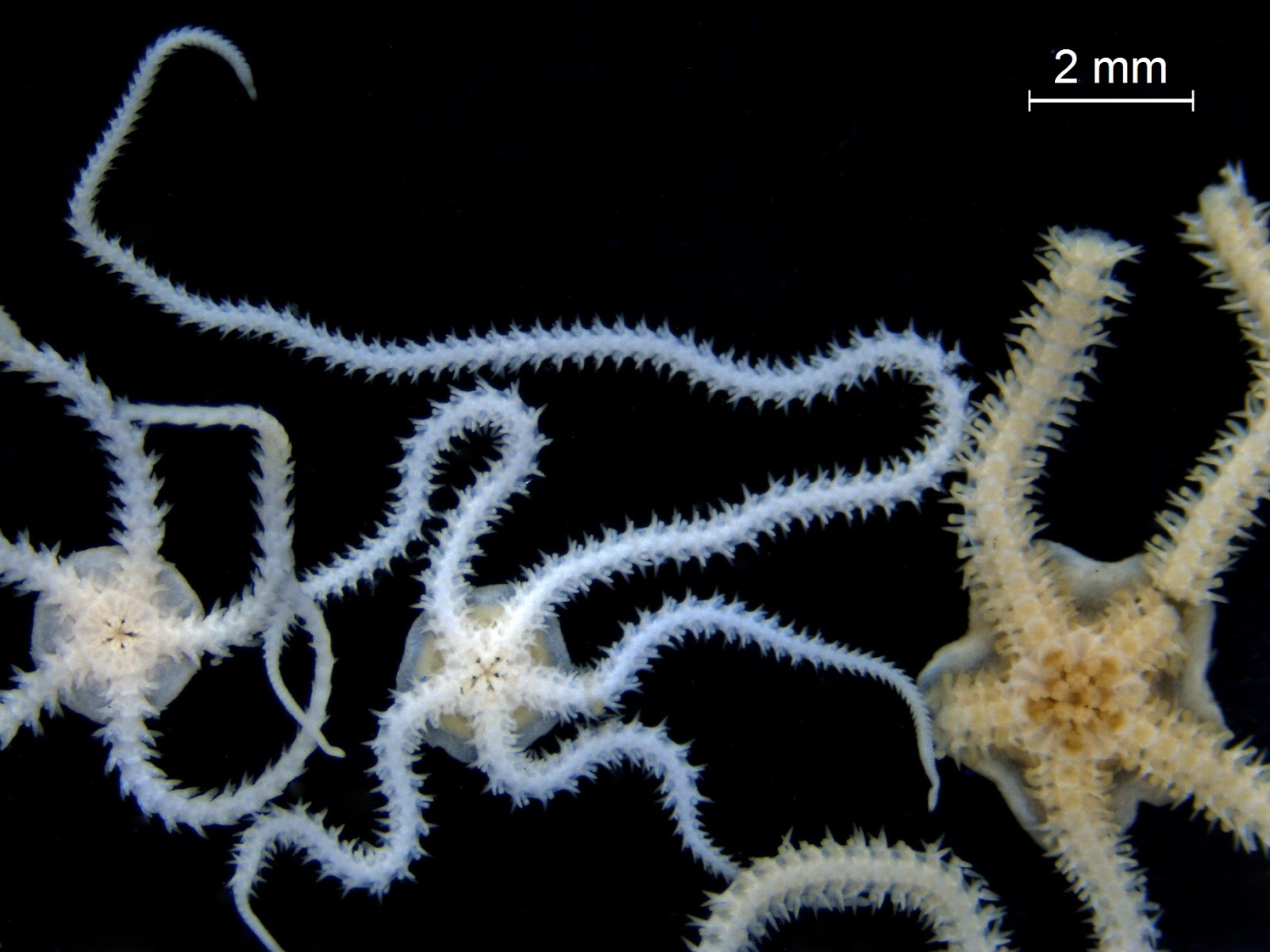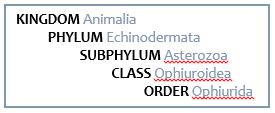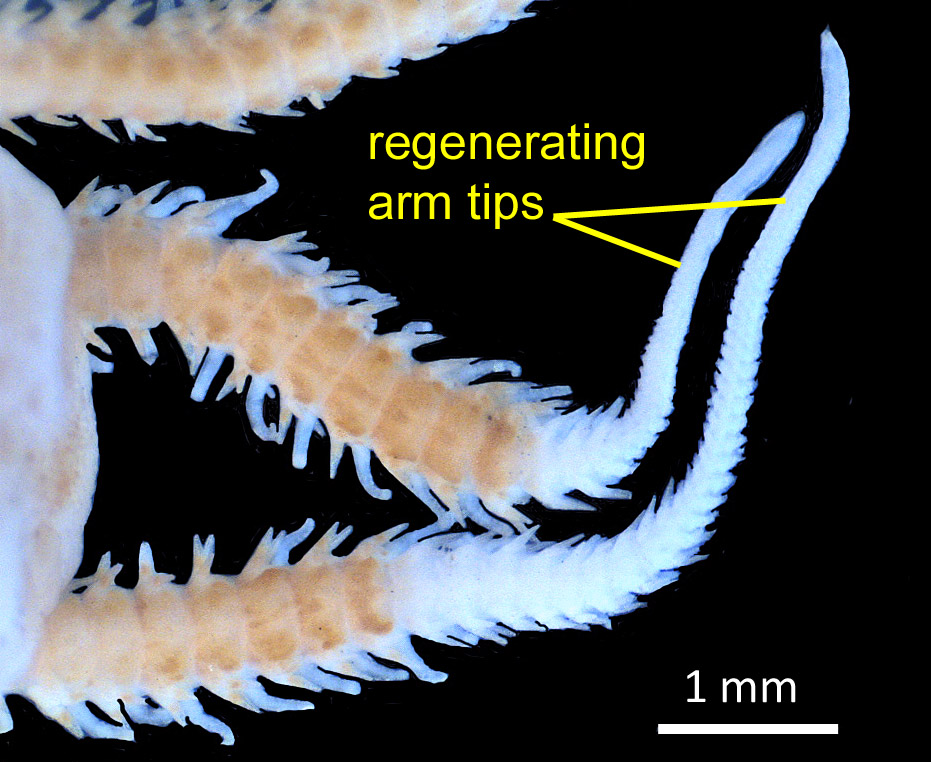
Charming and disarming
The brittle stars truly are in a class all their own. Class Ophiuroidea, derived from the ancient Greek words ophis meaning “snake” and ura meaning “tail,” refers to the snake-like way their long, slender arms move. In fact, an alternate common name is the serpent stars.
Off the deep end
Central disc of Ophiura luetkenii, dorsal
There are more than 2,000 species of brittle stars alive today and they can be found worldwide, from shallow water to the deep sea. Some occur at depths greater than 3,500 meters — that’s over 10,000 feet! In the Pacific Northwest, there are 53 brittle star species. Here are some that call Puget Sound home:
- Amphiodia urtica/periercta – burrowing brittle star
- Amphiodia occidentalis – snaky-armed brittle Star
- Amphioplus strongyloplax
- Amphipholis squamata – dwarf brittle star
- Amphipholis pugetana – black & white brittle star
- Ophiura luetkenii – gray brittle star
- Ophiura sarsii – notched brittle star
While widely dispersed throughout Puget Sound, these brittle stars are found in higher numbers at our East Anderson Island, Commencement Bay, and outer Bellingham Bay sampling locations. Central disc of Amphiodia urtica/periercta, dorsal
At arm’s length
The brittle star body consists of a central disk containing all the organs to which the arms attach. The disk is made up of fused calcareous plates that can look a little like dragon scales that can be smooth or covered with spines. Wherever an arm meets the disc, the plates are larger, forming radial shields.
Close-up of an arm of Amphiodia urtica/periercta.
All the brittle star species found in Puget Sound have five arms but species in other areas sport up to nine. They use their arms and tubed feet with suckers at the ends to get around. Their long, flexible arms provide locomotion and consist of hundreds of small interlocking plates linked by muscles that function like joints to bend to bend the animals backwards and forwards.
Amphiodia urtica/periercta with regenerating arms.
Lay down your arms
They may be fragile, but fortunately, brittle stars have a trick up their spiny little sleeves: just like lizards can drop their tails if grabbed by a predator, brittle stars can drop their arms if a predator gets them in their grip! This defense mechanism proves useful to ensure that the star lives to fight another day. As long as the central disc is intact, the lost or broken arms can regenerate, or grow back.
Armed to the teeth
Close-up of the mouth of Amphipholis squamata, located on the underside of the central disc.
Puget Sound species of brittle stars are facultative detritivores, which means that they eat dead organic matter (detritus) on the sea floor. However, they aren’t picky eaters, and will switch to eating other foods if detritus is scarce. The food particles just have to be small enough fit into the brittle star's tiny mouth, located on the underside of the central disc. Encircling the mouth are five jaws with “teeth” called oral papillae. We look at the number, size,and shape of these papillae to distinguish between the different species.
Seeing the light
Have you ever wondered how eyeless animals like brittle stars see? Researchers who study these animals were curious about this is as well and observed that the stars displayed particular behaviors in response to light. This light-responsive behavior, called extraocular photoreception, allows brittle stars to sense when they are exposed to light so they can move toward shade that might represent shelter from predators. This amazing ability is only skin-deep: The skin covering a brittle star’s arms is packed with light-sensitive cells which help the animal sense its surroundings.
Critter of the Month
Our benthic taxonomists, Dany and Angela, are scientists who identify and count the benthic (sediment-dwelling) organisms in our samples as part of our Marine Sediment Monitoring Program. We track the numbers and types of species we see in order to understand the health of Puget Sound and detect changes over time.
Dany and Angela share their discoveries by bringing us a Benthic Critter of the Month. These posts will give you a peek into the life of Puget Sound’s least-known inhabitants. We’ll share details on identification, habitat, life history, and the role each critter plays in the sediment community. Can't get enough benthos? See photos from our Eyes Under Puget Sound collection on Flickr.







